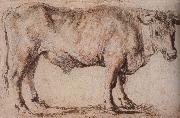Wholesale Oil Painting No Minimum |
|||||||||||
|
|
|||||||||||

|
|||||||||||
|
|
|
||||||||
Peter Paul RubensFlemish Baroque Era Painter, 1577-1640 Peter Paul Rubens (June 28, 1577 ?C May 30, 1640) was a prolific seventeenth-century Flemish Baroque painter, and a proponent of an exuberant Baroque style that emphasized movement, color, and sensuality. He is well-known for his Counter-Reformation altarpieces, portraits, landscapes, and history paintings of mythological and allegorical subjects. In addition to running a large studio in Antwerp which produced paintings popular with nobility and art collectors throughout Europe, Rubens was a classically-educated humanist scholar, art collector, and diplomat who was knighted by both Philip IV, king of Spain, and Charles I, king of England. Rubens was a prolific artist. His commissioned works were mostly religious subjects, "history" paintings, which included mythological subjects, and hunt scenes. He painted portraits, especially of friends, and self-portraits, and in later life painted several landscapes. Rubens designed tapestries and prints, as well as his own house. He also oversaw the ephemeral decorations of the Joyous Entry into Antwerp by the Cardinal-Infante Ferdinand in 1635. His drawings are mostly extremely forceful but not detailed; he also made great use of oil sketches as preparatory studies. He was one of the last major artists to make consistent use of wooden panels as a support medium, even for very large works, but he used canvas as well, especially when the work needed to be sent a long distance. For altarpieces he sometimes painted on slate to reduce reflection problems. His fondness of painting full-figured women gave rise to the terms 'Rubensian' or 'Rubenesque' for plus-sized women. The term 'Rubensiaans' is also commonly used in Dutch to denote such women. |
||||||||
|
|
||||||||
Bull
Bull Painting ID:: 53030 |
mk225
1618
28.6x44cm
mk225 1618 28.6x44cm |
|||||||
|
|
||||||||
|
POTTER, Paulus Dutch Baroque Era Painter, 1625-1654 Son of Pieter Potter. He was related through his mother, Aechtie Pouwels (d 1636), to the wealthy and powerful von Egmont and Semeyns families, who held important offices in Enkhuizen and at the court in The Hague. He worked in his father's studio in Amsterdam during the 1630s and, like him, painted history subjects that show the strong influence of Claes Moeyaert, with whom Paulus may also have studied. In the painting Abraham Returning from Canaan he adapted the landscape setting from an etching by Moses van Uyttenbroeck and the figures from works by Moeyaert from over ten years earlier. Significantly, however, he redistributed the numerous animals and figures that Moeyaert had aligned evenly across the frontal plane; Potter placed them to one side, permitting a view into the deep distance where other animals can be seen. Potter followed his father more than Moeyaert in searching for ways to integrate his figures with the landscape, bull Date 1647 Medium Oil on canvas Dimensions 235.5 X 339 cm (92.72 X 133.46 in) cyf |
||||||||
|
|
||||||||
|
Prev Next
|
||||||||
|
|
||||||||
|
Related Paintings to POTTER, Paulus :. |
||||||||
|
|
||||||||
|
CONTACT US |

